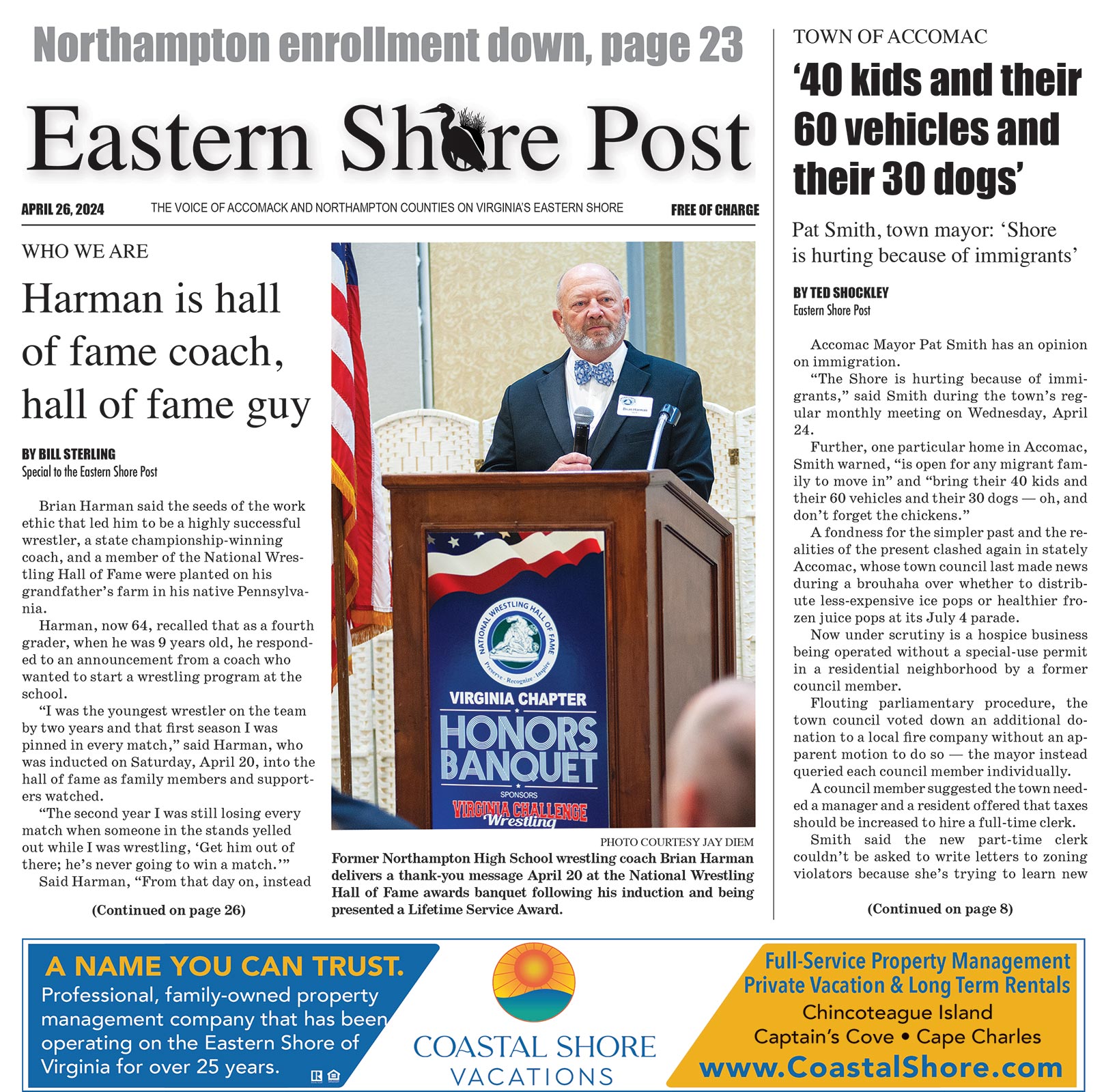By Stefanie Jackson – The Northampton school board has written its wish list for state funding in 2020, and money for competitive teacher salaries, called the Cost of Competing Adjustment (COCA), is the top priority, Superintendent Eddie Lawrence said Sept. 12.
“If Accomack’s pushing for it, we need to push for it, too, because if they get it and we don’t, it’s going to put us at a disadvantage forever,” he said.
COCA was created for northern Virginia counties that compete with the Washington, D.C., area for teachers and school staff.
COCA is “the easiest way for us to be competitive with teacher pay. I don’t think it’s going to happen,” Lawrence cautioned.
But the Eastern Shore still has a chance to receive COCA. “Accomack really has a great case” for it “because they’re bordering the richest county in Maryland, because of Ocean City,” he said.
In Northampton, “our contention will be … if you give it to Accomack and don’t give it to us, it will destroy us,” Lawrence said.
Accomack and Northampton have a better chance of getting COCA by submitting a joint application, since Northampton has a higher, more burdensome real estate tax rate, he added.
The second priority is finding alternative funding for increasing teacher pay in the event that Northampton doesn’t qualify for COCA.
At-Risk Add-On funds are third on the list. The At-Risk Add-On program began in 1993, after a commission appointed by Virginia’s governor discovered that the cost to educate at-risk students exceeded the funding received by school divisions that serve those students.
The amount of At-Risk Add-On funds a school division receives is based on the percentage of students who qualify for free lunch. A student qualifies for the National Free Lunch Program if his family’s household income is near or below the federal poverty level.
(The National School Lunch Program, in which only students who qualify for the program receive free lunch, should not be confused with the Community Eligibility Provision, in which all students receive free lunch based on the percentage of students who qualify. Both programs are funded by the U.S. Department of Agriculture.)
The Northampton school division will ask state legislators to increase the percentage by which the At-Risk Add-On program funds schools in high-poverty areas.
School divisions welcome At-Risk Add-On funds because they are “much more flexible, with fewer strings attached,” Lawrence said.
During the Great Recession, Virginia legislators limited the number of school support staff that the state funds. The Northampton school division’s fourth legislative priority is urging the General Assembly to lift the cap, giving public schools more funding for personnel such as social workers and guidance counselors.
The fifth priority is seeking what Lawrence called an “enrollment decline allocation” – assistance for school divisions in which the number of students is dropping, but not enough to cut teachers and other staff.
Previously, schools received this additional funding based on the “10-10-10” rule: a school must have 10,000 or fewer students and have experienced a population decline of at least 10% within a 10-year period.
School board member Nancy Proto suggested adding a sixth priority, requesting that the Virginia Department of Education amend its Standards of Quality to lower the required ratio of school staff to students, meaning school divisions could hire more staff to serve student needs and get more state funding for those positions. Her peers agreed.
Chief Financial Officer Brook Thomas noted the Northampton school division could get the extra funding without hiring more people, because it already exceeds Standards of Quality school staffing requirements.
“It doesn’t change your staffing as much as it changes the state’s share of the funding for the staffing you already have.”


